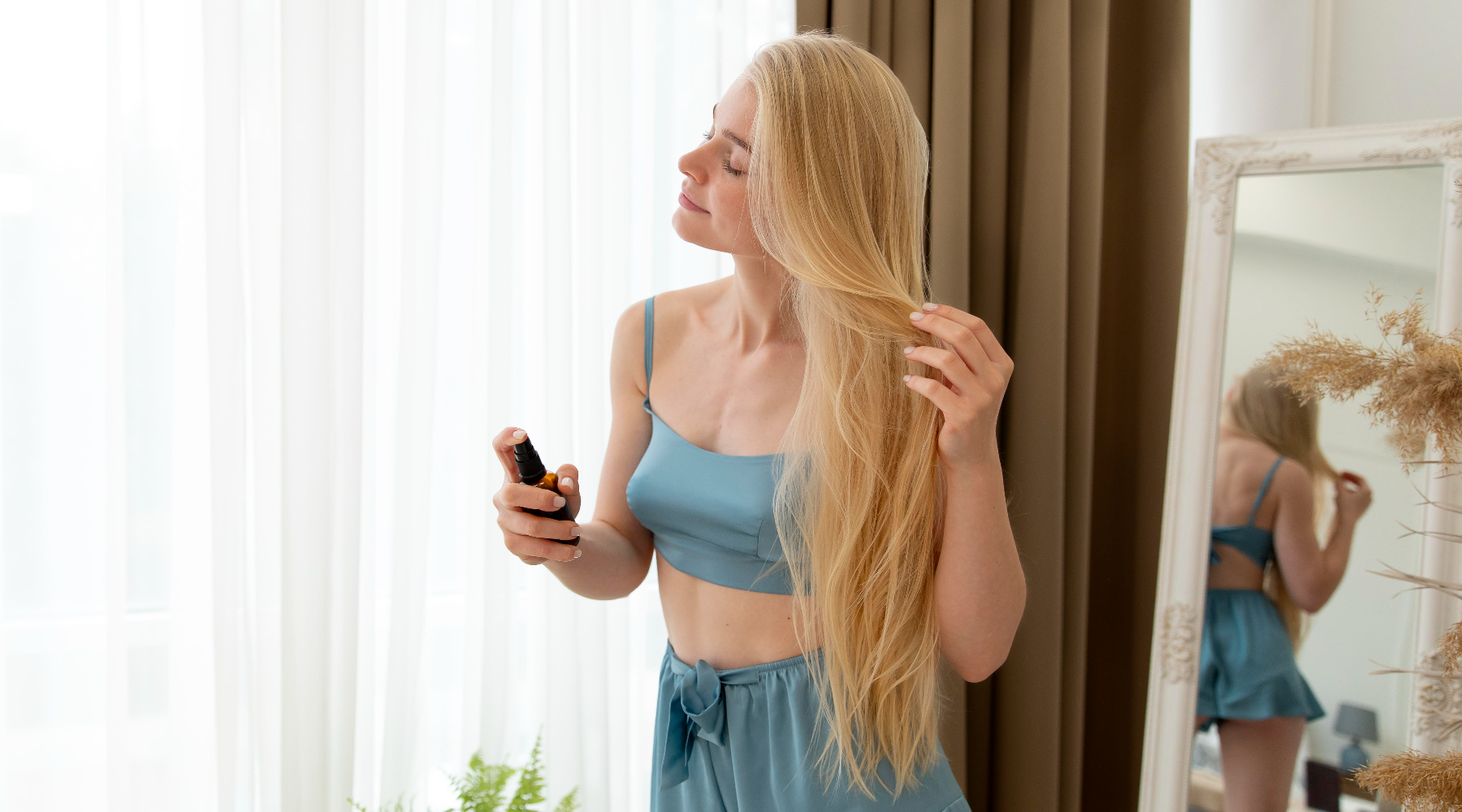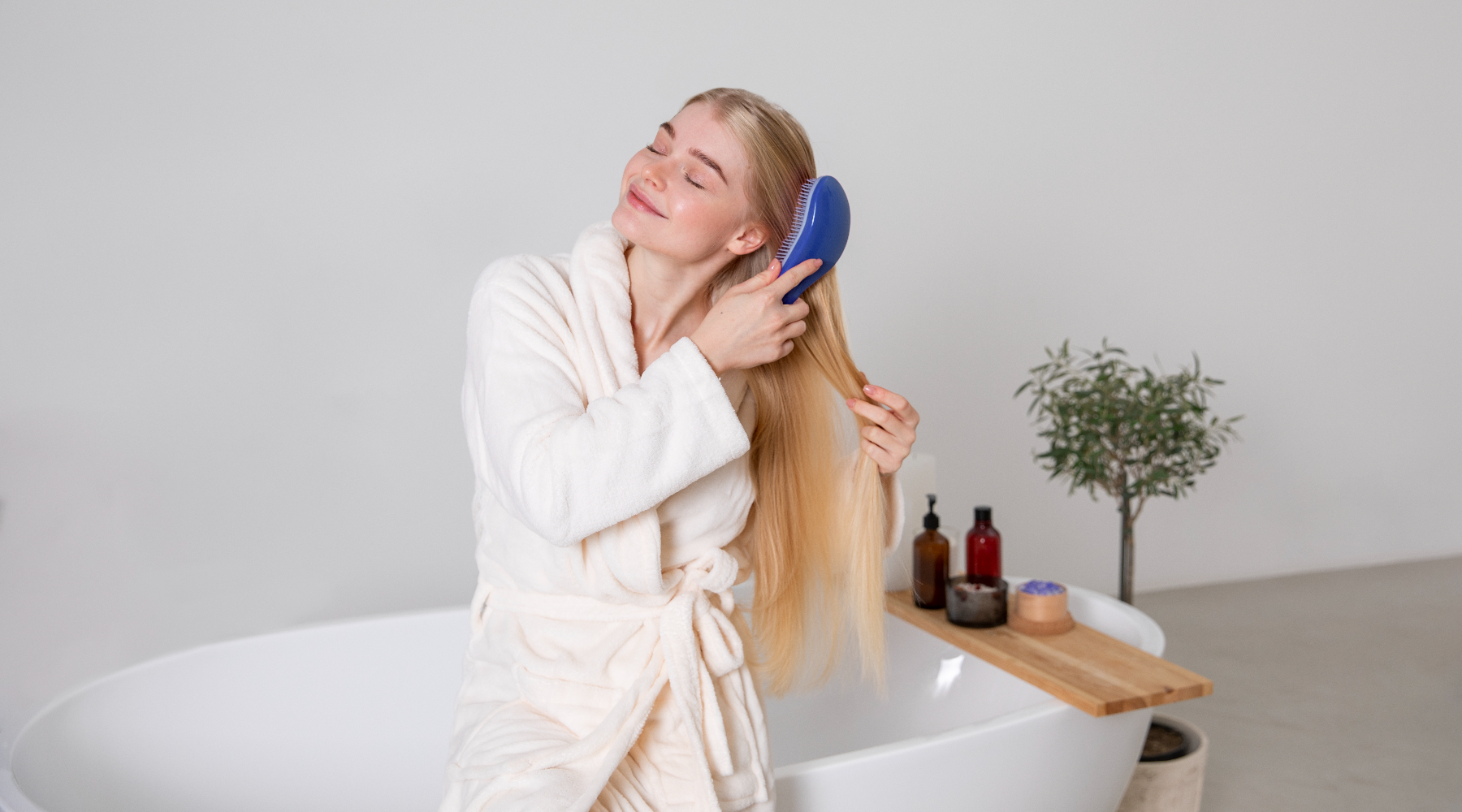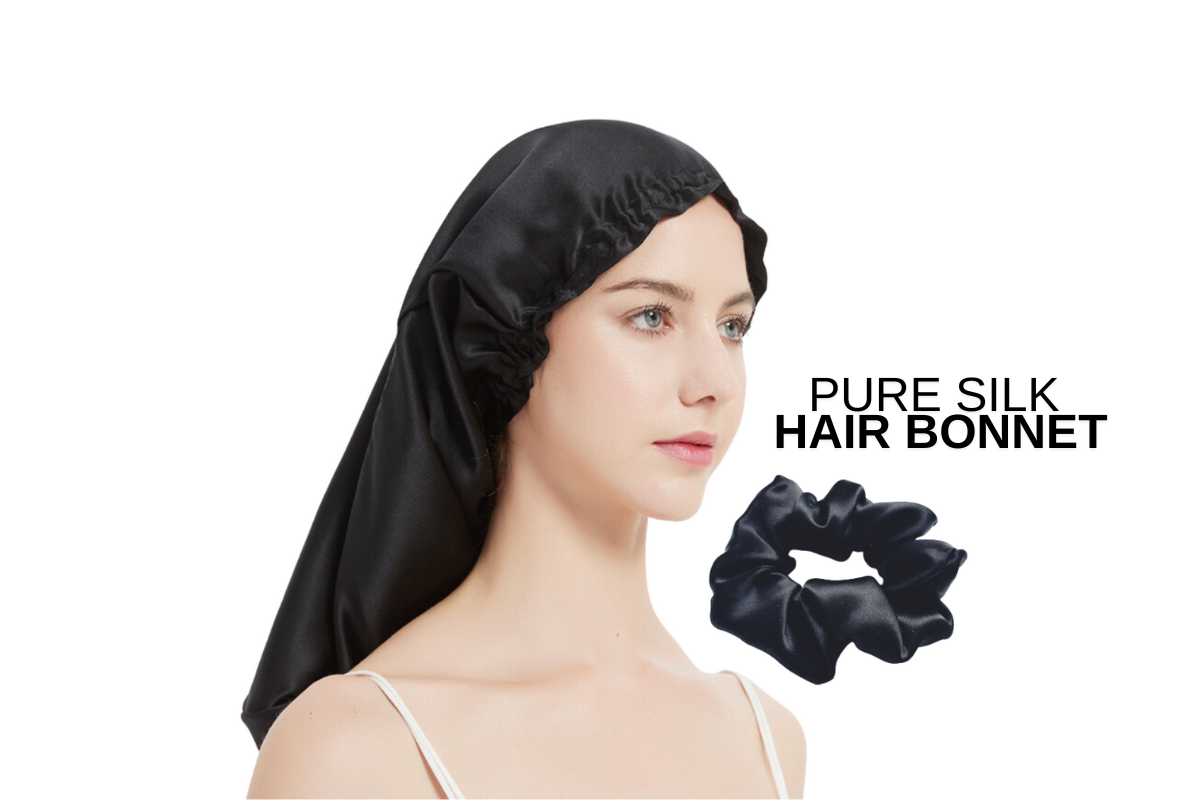
A Complete Haircare Guide
To maintain healthy, beautiful hair, it’s essential to adopt a holistic haircare routine that doesn’t just focus on the wash itself but also on what you do before and after washing your hair. Here's a step-by-step guide that covers everything from prewash treatments to taking care of your hair between washes.
1. Prewash Routine
A prewash routine prepares your hair for washing by ensuring it stays hydrated and protected from harsh cleansers. This step is often called a pre-poo treatment (short for pre-shampoo) and is especially beneficial for those with dry or curly hair.
- Detangle: Before applying any treatment, gently detangle your hair to remove knots. Use a detangling brush with flexible bristles or your fingers to prevent breakage.
- Apply a Pre-poo Treatment: Choose from ready-made products or use natural ingredients like pure coconut/argan oil or aloe vera gel. It is recommended to use scientifically-backed ingredients for hair growth, such as rosemary oil, on the scalp where growth occurs. For the lengths of the hair, nourishing ingredients like coconut oil are ideal, as they penetrate the hair shaft effectively and help prevent protein loss caused by water damage to the protein bonds.
- Apply products to full-lengths and scalp.
- Massage your scalp for 5 minutes with your fingers or an electric scalp massager with red light for added benefits.
- Use a derma roller with at least 0.5 mm needles before applying your products to enhance absorption and maximize results.
- Leave products on for at least an 1 hour or overnight for deeper nourishment.

Why It Helps: A pre-poo treatment prevents your hair from being stripped of natural oils during washing, keeping it smooth and moisturized.
Applying oil to your hair before you wash it can reduce the amount of water absorbed by the hair shaft. This makes it less prone to damage while it’s wet. Coconut oil is best at entering the shaft due to it's structure, hence why it's the best oil to use for this purpose.
2. Wash Routine
Shampooing:
- Use Sulfate-Free Shampoo: Sulfates can strip your hair of natural oils. Common sulfate ingredients include sodium lauryl sulfate (SLS), sodium laureth sulfate (SLES), and ammonium lauryl sulfate (ALS).That said, these surfactants can be acceptable when accompanied by a pre-wash treatment to safeguard your hair lengths and scalp.
- Look for gentle surfactants These are known as foaming agents that effectively cleanse the hair and scalp by adhering to both water and dirt/grease. Look for ingredients such as decyl glucoside and sodium cocoyl isethionate.
- Shampoo at least twice to ensure your hair is thoroughly cleansed, particularly for removing any pre-poo treatment.
- Focus on the Scalp: Massage the shampoo into your scalp to effectively eliminate buildup, and use a shampoo brush for a deeper cleanse. Additionally, apply some shampoo to the lengths of your hair to remove product residue and the pre-poo treatment.
- Rinse Thoroughly: Use lukewarm water to rinse out the shampoo.

Conditioning:
- Never skip this step. Conditioners often contain silicone, which is excellent for smoothing and detangling wet hair—especially important since hair is more fragile and prone to breakage when wet.
- Squeeze excess water before application.
- Apply a generous amount of conditioner from mid-lengths to ends, not the scalp.
- Rinse with Cool Water: Helps seal the cuticle, leaving hair shiny.
3. Post-Wash Routine
Towel Dry Gently:
- Use a microfiber towel or soft t-shirt to blot excess water gently. It's recommended to wear this for at least 30 minute. In the meantime, you can do your skincare routine or apply makeup.
Apply a Leave-In Conditioner or Serum:
- Before brushing your damp hair (after towel drying), apply a leave-in conditioner or serum to lock in moisture. This will also make detangling easier and help smooth out knots for effortless brushing.

Air Dry vs. Blow Dry:
- Air Dry: If you have short hair and find that it dries quickly, use this approach.
- Blow Dry Carefully: If your hair is long and thick, using a blow-dryer is recommended. Leaving hair wet for extended periods can lead to damage, so speeding up the drying process is essential. According to a study, using an ionic hair dryer at a medium heat setting, held about 15 cm from your hair, does not cause damage. Dry approximately 70% of your hair using this method, then allow the rest to air-dry in a loose braid or bun. The roots typically take longer to dry than the lengths. Apply hair oil (natural or silicone-based) to the lengths as needed to maintain moisture.
4. Between Wash Days (Daily Maintenance)
- Use a hydrating leave-in conditioner: if you feel like oils are too heavy for your hair or it tends to get greasy, spray some leave-in conditioner to your lengths whenever needed.
- Use a natural or silicone based hair oil: Apply a few drops or pumps of oil to your hair lengths daily, either before or after brushing and styling. Be cautious with silicone-based oils, as overuse can cause dryness and product buildup. We recommend using them sparingly for tasks like detangling stubborn knots, providing heat protection, or general smoothing. Opt for natural hair oils formulated by reputable brands (avoid using heavy oils like coconut from the supermarket), followed by gentle brushing and securing your hair in a protective style (to avoid the use of heat styling tools).
- Scalp Care: If your scalp feels dry, consider using soothing water-based scalp serums to prevent greasiness. Mixing a few drops of lavender essential oil with a lightweight oil, such as jojoba, may also help address this issue.

Protect Your Hair at Night:
- Wear a protective style: braids are the best for nighttime protection. Pair this with a silk or satin scrunchie.
- Satin or Silk Pillowcase: Sleeping with one reduces friction and helps prevent tangles. It's also great for the skin.
- Satin or Silk Hair Bonnet: Offers even better protection and helps prevent the dreaded bedhead in the morning. It’s also ideal for long hair that tends to slip off the pillowcase.

Here's a summary of the steps that make a great haircare routine:
- Pre-wash routine (pre-poo treatment)
- Wash routine (shampooing and conditioning)
- Post-wash routine (moisturising and styling)
- Between wash days (daily maintenance)
Final Thoughts
A comprehensive haircare routine from prewash to daily maintenance is essential for strong, healthy, and beautiful hair. Stick to this routine consistently, and your hair will look and feel its best!
Photos are from Freepik.com




Hinterlasse einen Kommentar
Diese Website ist durch hCaptcha geschützt und es gelten die allgemeinen Geschäftsbedingungen und Datenschutzbestimmungen von hCaptcha.